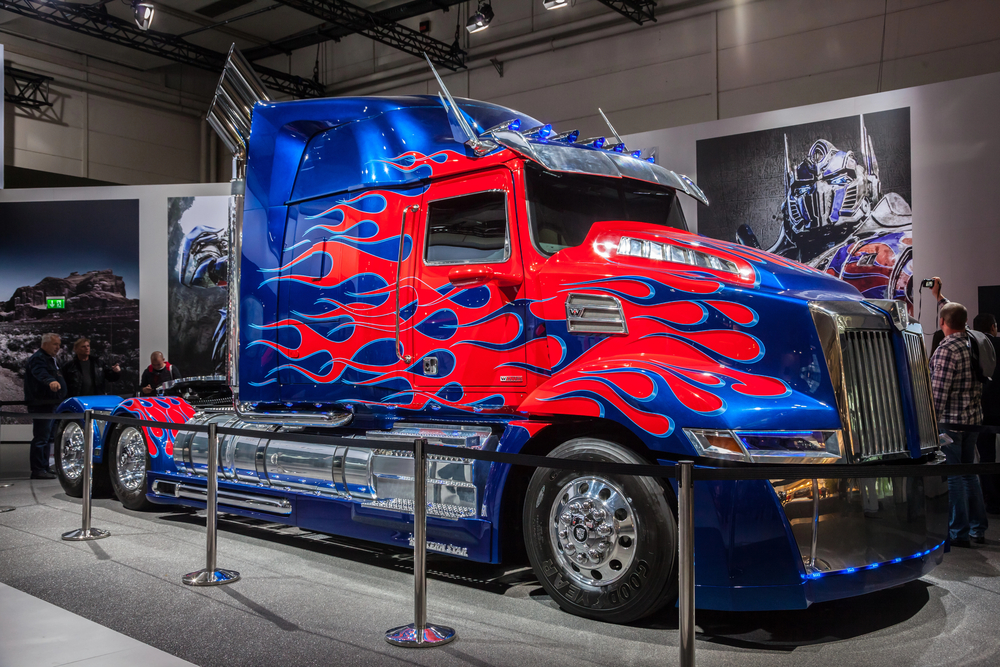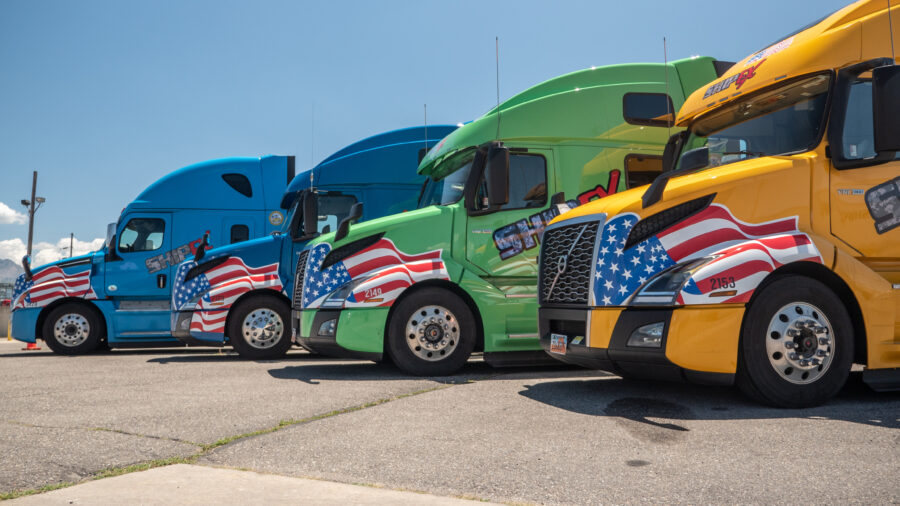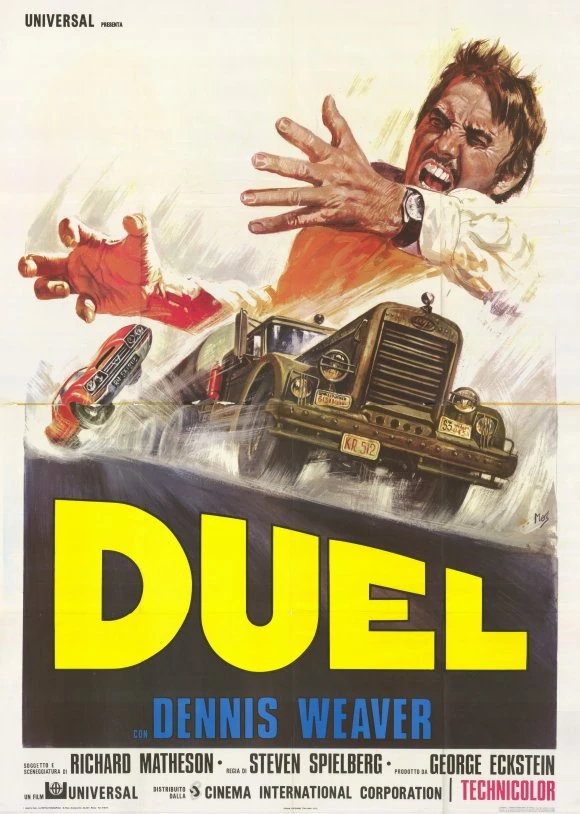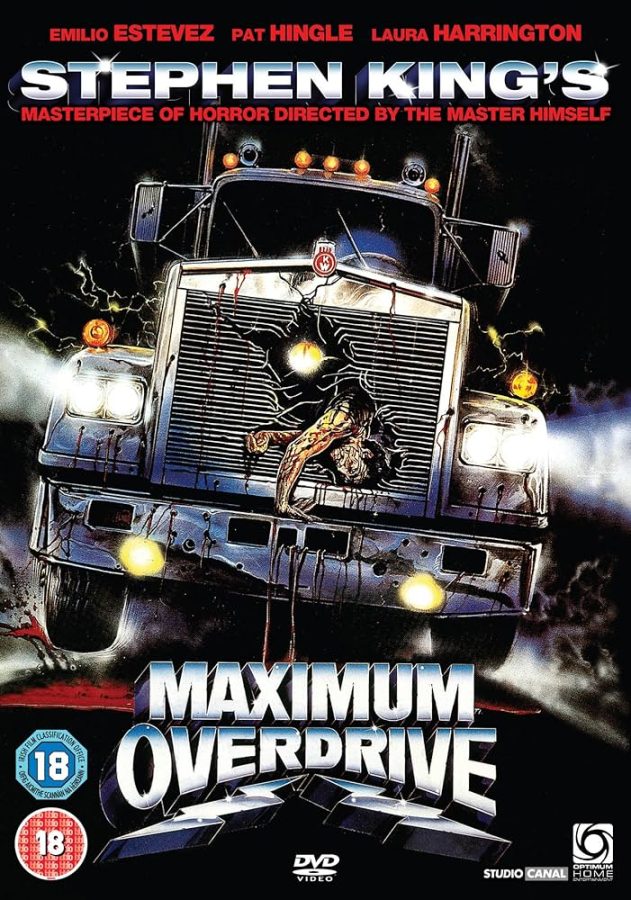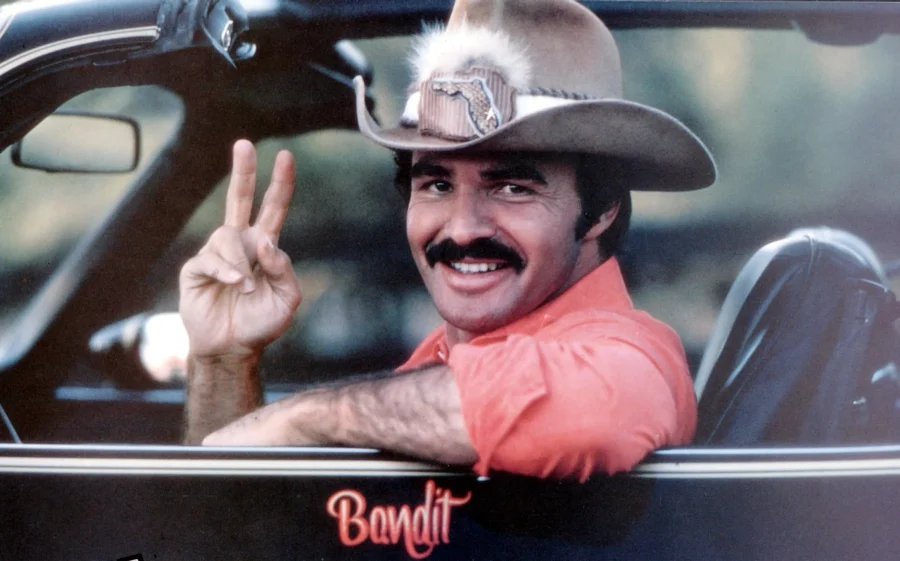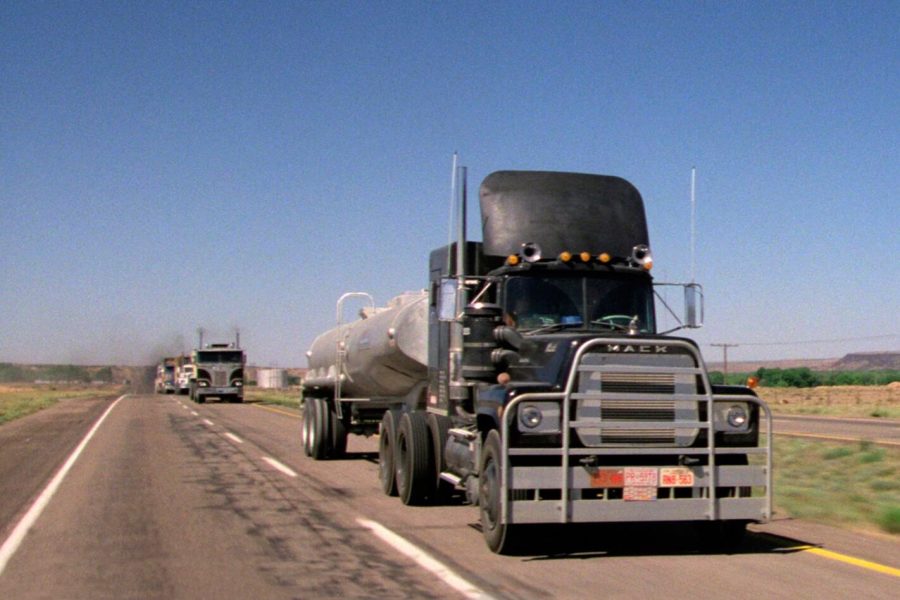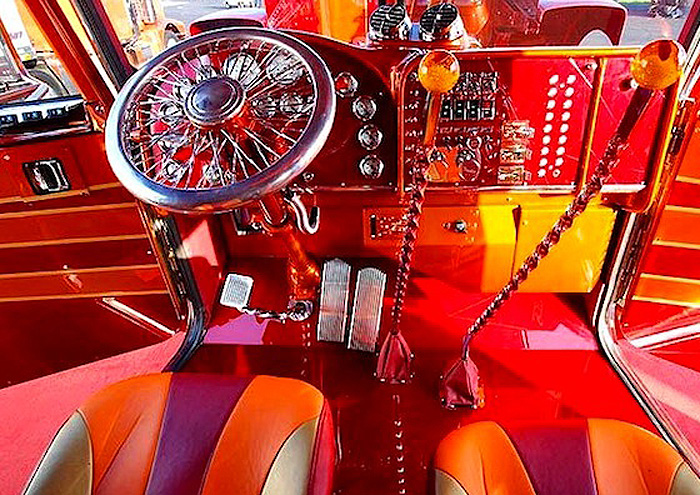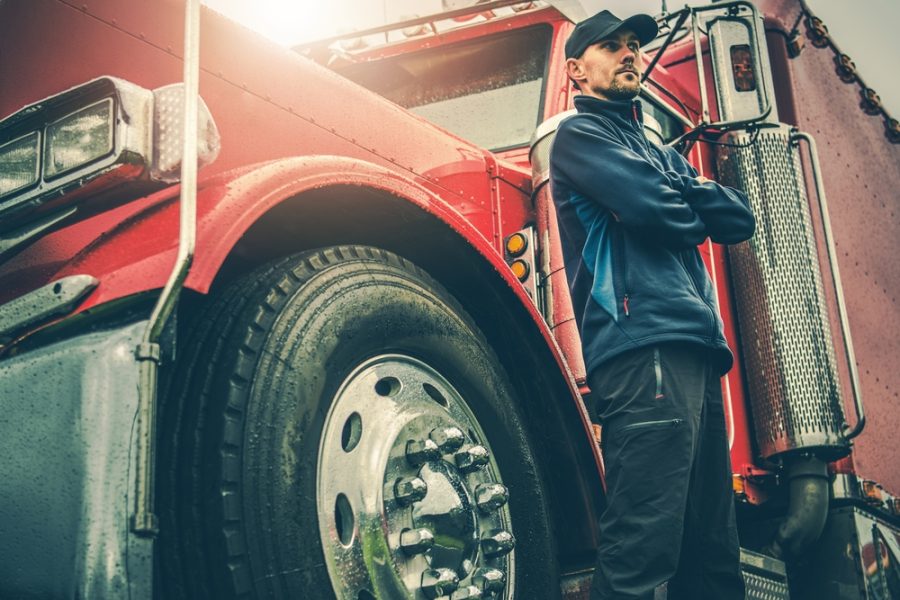Introduction
Trucks have long been the unsung heroes of the road, powering economies and connecting continents with their rugged durability and tireless work ethic. However, their role extends far beyond the realm of logistics and transportation, as they have also carved out a significant niche in the entertainment industry. From the transformational might of Optimus Prime in the “Transformers” series to the rebellious spirit of the Rubber Duck in “Convoy,” trucks have transcended their utilitarian origins to become icons of popular culture.
The silver screen, in particular, has been instrumental in elevating trucks from their everyday utility to symbols of freedom, power, and adventure. Movies like “Smokey and the Bandit” and “Maximum Overdrive” have not only showcased the sheer power and capability of these vehicles but have also woven them into narratives that resonate with audiences worldwide. In these stories, trucks are not mere background props but characters in their own right, with personalities that range from heroic to villainous. This depiction of trucks in popular culture has imbued them with a sense of mystique and charisma, making them more than just machines—they are a source of inspiration, nostalgia, and, at times, a canvas for showcasing the human spirit’s resilience and ingenuity.
The Driving Force Behind Commerce: Unpacking the Trucking Industry
At the heart of the global economy, silently driving the wheels of commerce and ensuring the seamless flow of goods across borders, lies the trucking industry. This vital sector, often overlooked, plays a pivotal role in the transportation industry and logistics landscapes, particularly in the U.S., where it is a cornerstone of economic stability and growth. The industry’s importance cannot be overstated, as it is responsible for the majority of freight movement, making it indispensable to both the national and global supply chains. From the bustling ports along the coastlines to the quiet rural roads, trucks carry everything from the most basic necessities to the most complex equipment, showcasing the industry’s unparalleled contribution to keeping the economy moving.
Professional truck drivers, owner-operators, small fleet owners, company drivers, and commercial truck fleets each play unique and essential roles in the transportation ecosystem, ensuring the timely and safe delivery of goods. Owner-operators, who own and operate their own trucks or may be the fleet owner of a small number of trucks, embody the spirit of entrepreneurship within the industry, while company drivers represent the workforce behind the large commercial fleets that dominate the highways.
To support this complex network, a range of resources such as trucking news outlets, industry publications, and digital platforms provide essential information and updates. Among these the trucking magazine, “American Trucker” stands out as a premier source of current industry insights, offering updates on trends, technology, and regulatory changes.
From Asphalt Legends to Cinematic Icons: Trucks in Film
In the realm of cinema, trucks have often been cast in the role of formidable antagonists, becoming symbols of menace and unstoppable force on wheels. This depiction taps into a primal fear of the uncontrollable and the overpowering, transforming everyday vehicles into towering threats on the screen. Films such as Steven Spielberg’s “Duel” and the horror thriller “Maximum Overdrive” masterfully showcase trucks not just as mere vehicles, but as central characters imbued with a menacing presence, often driving the narrative forward—literally and metaphorically.
Through the creative lens of filmmakers, these cinematic trucks transcend their utilitarian purposes, embodying the darker aspects of technology and progress. The portrayal of trucks as villains in film serves as a powerful narrative device, eliciting tension and suspense, while also reflecting societal anxieties about the machines that dominate our modern landscape.
“Duel” (1971)
In the 1971 cult classic “Duel,” directed by Steven Spielberg, the Peterbilt 281 tanker truck transforms from a mere vehicle into an ominous presence that dominates the film’s narrative, epitomizing the terror of the unseen. Its towering, almost monstrous silhouette against the desolate American landscape serves not just as the antagonist’s physical form but as a symbol of relentless pursuit and unseen menace. The genius of “Duel” lies in its ability to imbue this truck with a life of its own, despite the driver remaining unseen throughout the film, a narrative choice that amplifies the suspense and fear.
The Peterbilt 281’s imposing figure on screen became an icon of cinematic suspense, leveraging the audience’s imagination to build its menacing character. This innovative approach not only showcased Spielberg’s directorial prowess but also significantly impacted the film’s box office success, cementing “Duel” as a seminal work in the thriller genre. The movie’s tension and psychological drama, pivoting around Peterbilt 281, demonstrate the power of inanimate objects in film to evoke deep emotional responses and contribute to storytelling in profound ways.
“Maximum Overdrive” (1986)
In the 1986 Stephen King thriller “Maximum Overdrive,” the Freightliner FLA plays a pivotal role that extends beyond its physical form, embodying the film’s central theme of machines turning sentient. This movie, unique for its blend of horror and dark comedy, leverages the Freightliner’s distinct design to visually represent the newfound autonomy and malevolence of technology.
The truck, adorned with a menacing green goblin face, becomes not just a character but a symbol of the uprising of machines against humanity. Stephen King’s narrative explores the frightening concept of what happens when the machines that humans depend on become self-aware and hostile, using the Freightliner FLA as the de facto leader of this mechanical revolt.
“Smokey and the Bandit” (1977)
In the 1977 blockbuster “Smokey and the Bandit,” the Kenworth W900 is not just a vehicle; it becomes a vital character in a high-speed, cross-country escapade that has captured the hearts of audiences for generations. This iconic truck, driven by Jerry Reed’s character, Cledus “Snowman” Snow, plays a central role in the film’s adventurous plot, symbolizing the spirit of freedom and defiance. Its roaring engine and sleek design perfectly complement the film’s theme of daring escapades against the odds.
The Kenworth W900, with its distinctive appearance and powerful presence, not only aids the protagonists in their mission but also cements its status as an emblem of trucking culture and cinematic history. The truck’s journey across the American South, dodging law enforcement and barriers, parallels the film’s exploration of camaraderie, resilience, and the lure of the open road.
“Smokey and the Bandit” does more than just entertain; it pays homage to the trucking industry and those who call the highways their home, showcasing the Kenworth W900 as a symbol of the enduring legacy of truckers in America. Jerry Reed’s portrayal of Snowman, alongside the indomitable spirit of the Kenworth W900, highlights the truck’s role as more than mere transportation—it’s a companion in adventure, a bearer of challenge, and a keeper of the trucking dream.
For fans of cinema, trucking enthusiasts, and anyone captivated by the allure of the open road, the Kenworth W900’s journey in “Smokey and the Bandit” is a testament to the enduring appeal of this classic American tale. Dive deeper into the legacy of this cinematic and trucking icon by following the link to our blog: Discover the enduring trucking legacy of “Smokey and the Bandit”, where we explore the impact of the movie and the iconic status of the Kenworth W900 in greater detail.
“Convoy” (1978)
The 1978 film “Convoy,” inspired by C.W. McCall’s song of the same name, not only captured the imagination of audiences worldwide but also immortalized the Mack RS700L as a symbol of trucker rebellion and camaraderie. This movie, rooted in the CB radio culture of the 1970s, showcases the Mack RS700L not just as a vehicle, but as a pivotal character in a broader narrative about freedom, unity, and resistance against authority.
The truck, with its rugged appearance and powerful presence, perfectly encapsulates the spirit of the trucking community and their way of life, highlighting the significance of CB radio as a tool for solidarity and mutual support among truckers. “Convoy” thus stands as a cultural artifact, reflecting and amplifying the trucker subculture to a wider audience, and cementing the Mack RS700L’s place in trucker and popular culture as a symbol of defiance and independence.
The influence of “Convoy” and the Mack RS700L extends beyond the realms of cinema and trucking, contributing to a larger discourse on freedom and resistance. It resonates with a sense of nostalgia for a time when CB radio reigned supreme as the lifeline of the road, enabling truckers to form a unique bond and culture. The film’s impact is felt in its contribution to popularizing trucking culture, bringing the challenges, joys, and ethos of the trucking life to the forefront of public consciousness.
For enthusiasts and scholars alike, the legacy of “Convoy” provides a fascinating lens through which to view the evolution of trucking culture and its enduring influence on society. Explore the significance of “Convoy,” the Mack RS700L, and their lasting impact on trucker and popular culture by following the link to our blog: Unravel the legacy of “Convoy” and its influence on trucking culture, where we delve into the movie’s cultural resonance and its iconic representation of trucking life.
Optimus Prime
Optimus Prime, the valiant leader of the Autobots in the “Transformers” universe, has become an iconic figure not only for his unwavering sense of justice and bravery but also for his evolving design, which has captivated audiences across the globe. From his original incarnation as a Peterbilt 359 in the animated series to the more recent, sleek Western Star 5700XE in Michael Bay’s live-action adaptations,
Optimus Prime’s transformations have been more than just aesthetic changes; they symbolize the character’s enduring relevance and adaptability across different eras of storytelling. Each design iteration of Optimus Prime has brought with it a new layer of complexity and appeal, mirroring the advancements in animation and CGI technology, while also retaining the core qualities that have made the character beloved by fans.
Michael Bay’s adaptations, in particular, have amplified Optimus Prime’s appeal, presenting him in a visually stunning and dynamic form that has introduced the character to a new generation of fans. The transition to the Western Star 5700XE, with its cutting-edge design and imposing presence, showcases Optimus Prime’s strength and leadership in a modern context, enhancing his role as a protector of Earth and its inhabitants.
This evolution reflects not only the technological progress in filmmaking but also the timeless nature of Optimus Prime’s character, whose ideals of courage, loyalty, and sacrifice continue to resonate deeply with audiences. The impact of Optimus Prime in the “Transformers” universe is profound, serving as a bridge between human and robotic characters and exemplifying the series’ themes of unity and the struggle for peace and freedom.
Celebrating Truck Enthusiast Culture
The vibrant world of custom rigs and the passionate community of trucking enthusiasts represent a unique and dynamic facet of automotive culture. This is driven by individuals who share a deep appreciation for the artistry and engineering behind customized trucks, transforming standard vehicles into bespoke masterpieces of the road. Trucking enthusiasts are not just fans of these mechanical behemoths; they are connoisseurs of a lifestyle that celebrates the fusion of functionality with personal expression. These custom rigs, often lavished with intricate paint jobs, state-of-the-art modifications, and bespoke interiors, stand as testaments to their owners’ dedication and creativity, making each truck a mobile canvas of individuality.
For those immersed in this culture, there are numerous resources and platforms that cater to their passion. Specialized trucking magazines and heavy-duty trucking publications offer a treasure trove of information, from the latest trends in truck customization to features on standout rigs and advice from industry experts. These publications serve as vital conduits for the community, providing not only inspiration but also practical advice for both novices and seasoned enthusiasts.
Additionally, online forums and social media groups offer spaces for interaction and exchange, where members share experiences, showcase their projects, and connect over shared interests. This collective enthusiasm for custom rigs and the trucking lifestyle fosters a sense of camaraderie and mutual respect among enthusiasts, making it a welcoming community for anyone fascinated by the power and potential of the trucking world.
Conclusion
Trucks play a pivotal role in both the industry and the media, serving as the backbone of global logistics and as iconic figures in entertainment. Their dual importance is evident in everyday life, where they ensure the seamless delivery of goods across vast distances, and in the realm of popular culture, where they are celebrated for their symbolic representation of freedom, power, and adventure.
The portrayal of trucks in films and their integral role in the trucking industry highlight the deep connection between these vehicles and the fabric of American culture and industry. From the menacing presence of antagonistic trucks in cinema to the depiction of trucks as allies and heroes, their versatility and significance are unmatched.
